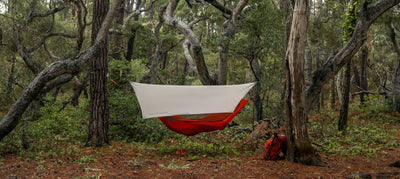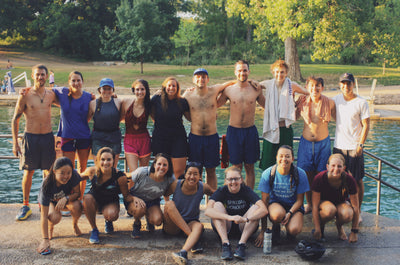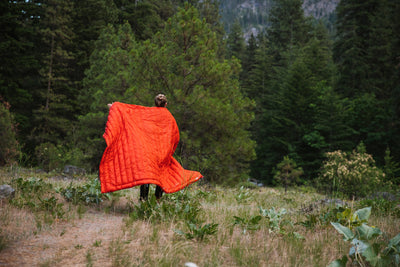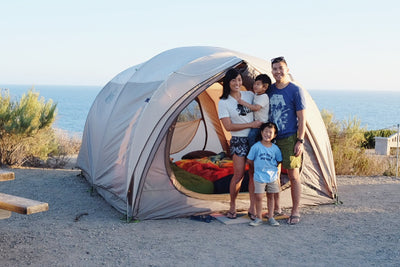Jersey Shore
story and photos by Clare Fieseler
The Jersey Shore has a reputation. Snooki, Casinos, and Springsteen come to mind. But if you ask a local surfer or fisher, she’ll shrug off those stereotypes and tell you that the best parts of the shore are wild: schools of bluefish, clean surf, oyster beds, and the last stands of untouched dunes where foxes still frolic. These are unlikely icons for the most built-up and paved-over coastline in the country. But finding and expanding the last wild parts of the Shore could be Jersey’s saving grace. Hurricane Sandy devastated homes and roads here. And, with climate change, the next big storm is no longer 100 years away. On the day after Christmas, waking up to salt air and a quiet house of sleeping family members, my husband and I went exploring the wild and concrete-free shore places that could help absorb the next hit. The temperature was 70F. The climate change jokes were flowing.
So, really, if you’re into adventure, don’t write off this stretch of coastline.
My family has Jersey Shore roots going back to the 1920s and even I was surprised when re-exploring my hometown and surrounding coastline post-Sandy. If you like a sprinkle of ecology with your adventure, grab your Roo. Below are some places worthy of soaking in while escaping from New York City. Upon arrival, you’re likely to run into Jersey’s rag-tag community of unlikely environmental advocates. I got to know a few while exploring and writing this winter. Their reputation (as change-makers, not guidos) is growing.

By Ferry | Sandy Hook, NJ
Imagine rolling dunes, seals, and over 300 migrating bird species with the NYC skyline as backdrop. Between Labor Day and Memorial Day, there is a direct ferry from Manhattan to Sandy Hook, NJ. Hang a Roo and watch for migrating seals on the bayside. Climb the oldest continuously operating lighthouse in the country. Or contact the American Littoral Society about their regular dune grass plantings here, restoring areas cleared for 19th century weaponry trials.
By Train | Spring Lake & Manasquan River, NJ
Bring your surf board on a NJ Transit southbound train on the North Jersey Coast Line, get off at Spring Lake, and walk one mile east to the surfing beach on Washington Ave. Ride waves while staring at the “Irish Riviera,” an area notorious for large Victorian homes, shady streets, and two Catholic churches to serve one square mile of residents. Having chosen ocean views and a $3.5 million post-Sandy boardwalk, Spring Lake is highly vulnerable with little dune protection. Contact Surfrider’s Jersey Shore Chapter about their volunteer programs replanting dune grass at the town’s northern end. In the afternoon, hop back on the train, go south two stops, and get off at Manasquan. Walk eight blocks due west to Paddle Out and rent a paddleboard. Access to the Manasquan River is just across the street. Pack your Roo for a 1-hour paddle to a densely vegetated Fisherman’s Cove or Gull Island where bird life abounds. Feeling adventurous? Rent a kayak instead. Paddle ten miles up to the mouth of the river, admiring some of the most intact, highly protective tidal marshlands of the northern Shore.
By Car | Barngat Bay, NJ
Try a foodie adventure with a great view. Once a staple of local diets since before Columbus, Matt Gregg is now leading an oyster comeback. The Jersey oyster fishery collapsed in the 1950s and, today, only nine oyster farms hold state permits. By leveraging a background in marketing and communication, Matt is truly a modern oyster farmer. He sold me 100 Christmas oysters first over Instagram advertising, then arranged delivery over texting, and finally sent me an invoice over PayPal. How easy. Forty North Oyster Farms is a twenty-acre mosaic of intertidal land on the Barnegat Bay surrounded by undeveloped land. A pirate flag waves over a dock. Matt gives private tours and tastings for a reasonable price. Call a week ahead (they aren’t always there), bring your Roo, and dive into the secret world of oysters. Did you know that oysters protect shoreline and clean the water? It’s a win-win, really. While you’re driving down to Barnegat on the Garden State Parkway, have your co-pilot read up on the NY/NJ Baykeeper’s efforts to test oyster reefs as hurricane mitigation tools. Or explore a new mobile-ready map to see where Jersey should rebuild reefs first. At the sake of cliché, here’s the gist: you’ll truly never look at oysters the same way again.

Have the best day ever | Island Beach State Park, NJ
This landscape will blow your mind. Mine did. Is this really less than 2 hours from Manhattan? Is this really Jersey? It’s not atypical for most Jersey Shore natives to have never been here. But Island Beach State Park is certainly our best-kept secret. On the seaside, a surf fishing paradise. On the bayside, a kayaking maze. There are more foxes than buildings in this park. The 10 miles of coastal dunes have remained almost untouched since Henry Hudson first described the Jersey coastline in 1609. You can’t camp, but you can do practically everything else. If you have a horse, bring it and ride anywhere you please. But if a Roo is all you have, you’re still in for a treat. From NYC, you’ll have to drive south on the Garden State Parkway to Route 35 to reach this last remaining stretch of barrier island ecosystem that one covered the entire Jersey coastline. It’s a vision for what the Shore can be. Or can at least, what we should work towards, in hopes of surviving the next big storm. While most restoration efforts have rebuilt the same concrete and beams that washed away, nothing compares to restoring the Mother Nature we bulldozed away. Ecologically speaking, it’s the only long-term solution to be, as the locals say, #JerseyStrong.
Clare Fieseler is a New Jersey native now residing in Washington, DC. She is an ecologist who researches ecosystem resilience and conservation. She is contributor to National Geographic News and NPR. Her professional photography is represented by National Geographic Creative. Follow her on Instagram and Twitter at @clarefieseler.






